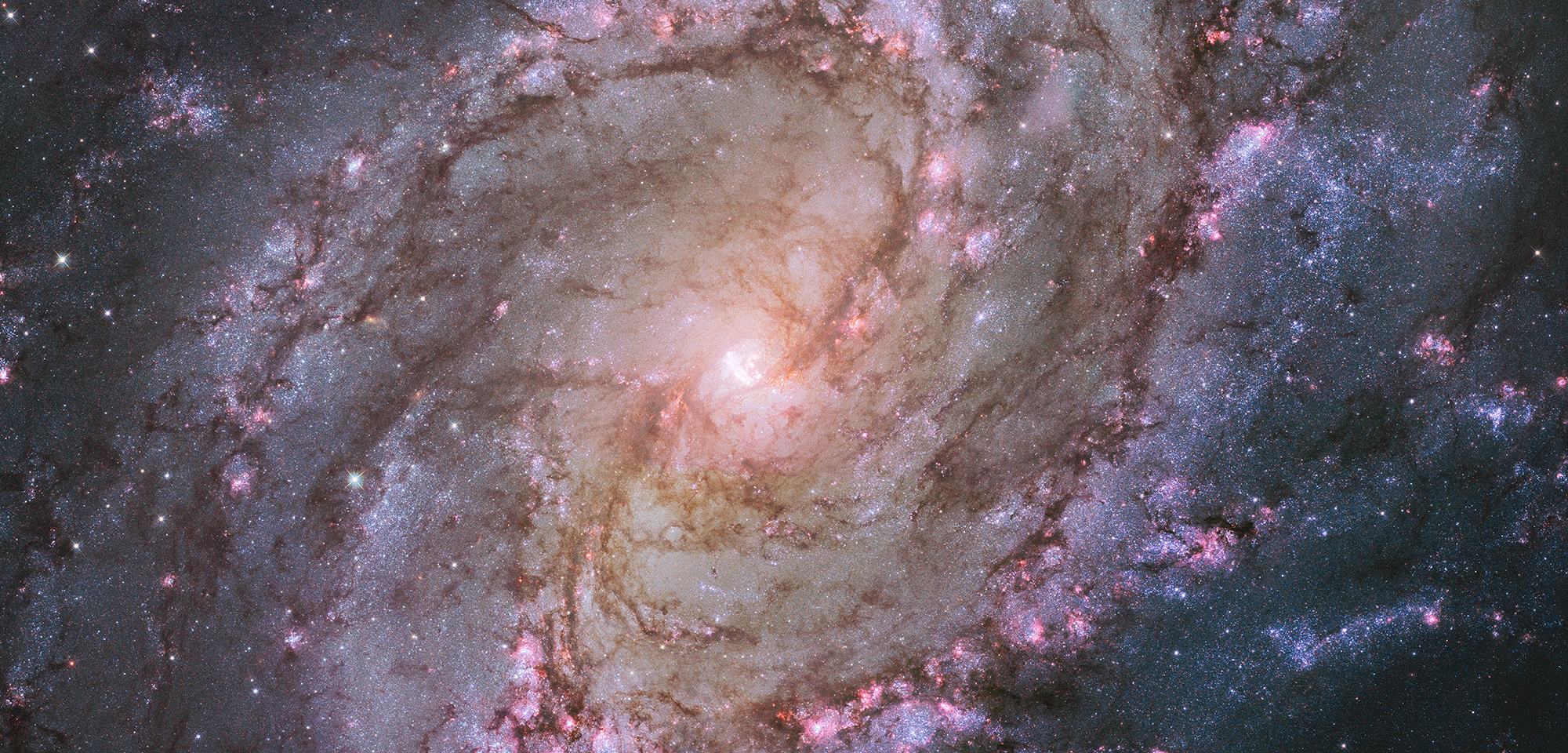1 min read
Galaxy M83

Located in the constellation Hydra, this colorful, swirling spiral galaxy is known as M83. A "starburst" galaxy, M83 is considerably smaller than our own galaxy but is producing stars at a much faster rate. The pink clouds of hydrogen gas that dot the galaxy's spiral arms are the nurseries where new stars are being born. The blue, grainy clumps mixed in with these star-forming regions are clusters of hot, young stars that have blown away the surrounding gas with their fierce ultraviolet radiation. Some of these young stars are only about a million years old. The yellow glow closer to the center of the galaxy comes from more mature stars that have lived for 100 million years or more. Astronomers are using Hubble's detailed examinations of M83 to investigate how stars form in clusters, how those clusters disperse over time, and how the stars eventually die, redistributing their contents into space for future generations of stars to build upon. For example, astronomers — including Rupali Chandar of the University of Toledo, Brad Whitmore from the Space Telescope Science Institute, and their collaborators — have been scrutinizing Hubble's high-resolution images in order to estimate the ages of star clusters in M83. This information reveals how many star clusters survive to old age and how many disband while their stars are still young. These studies suggest that star clusters form the same way throughout the galaxy. However, several research teams have found that more clusters are destroyed in the inner regions of M83 than the outer regions, indicating that environment may influence how long a cluster sticks together. A citizen-science project entitled Star Date: M83 also enlisted the aid of the general public in analyzing the ages of the galaxy's star clusters. Volunteers inspected Hubble images of M83 to classify the cluster's ages based on physical characteristics, providing more accurate age estimates than those generated by an automatic computer algorithm. As a consequence of producing lots of new stars, M83 is also rife with stellar death. In the past century, observers have witnessed six stellar explosions, called supernovae, in M83 — more than in almost any other known galaxy. Hubble has helped identify the remnants of these supernovae and hundreds of others in M83, including one from what appears to be a recent supernova not observed by anyone on Earth. Analyzing Hubble's observations, a team led by William Blair of the Johns Hopkins University has found evidence that environment also affects how these catastrophic stellar deaths disperse the raw materials for new star formation into the galaxy. Constellation: Hydra Distance: 15 million light-years (4.5 million parsecs) Instrument: Wide Field Camera 3/UVIS Image Filters: F336W (U), F438W (B), F547M (Strömgren y), F555W (V), F657N (H-alpha), F814W (I)
- Object NameObject NameA name or catalog number that astronomers use to identify an astronomical object.M83, NGC 5236, Southern Pinwheel Galaxy
- Release DateJanuary 9, 2014
- Credit
Share
Details
Claire Andreoli
NASA’s Goddard Space Flight Center
Greenbelt, Maryland
claire.andreoli@nasa.gov




























